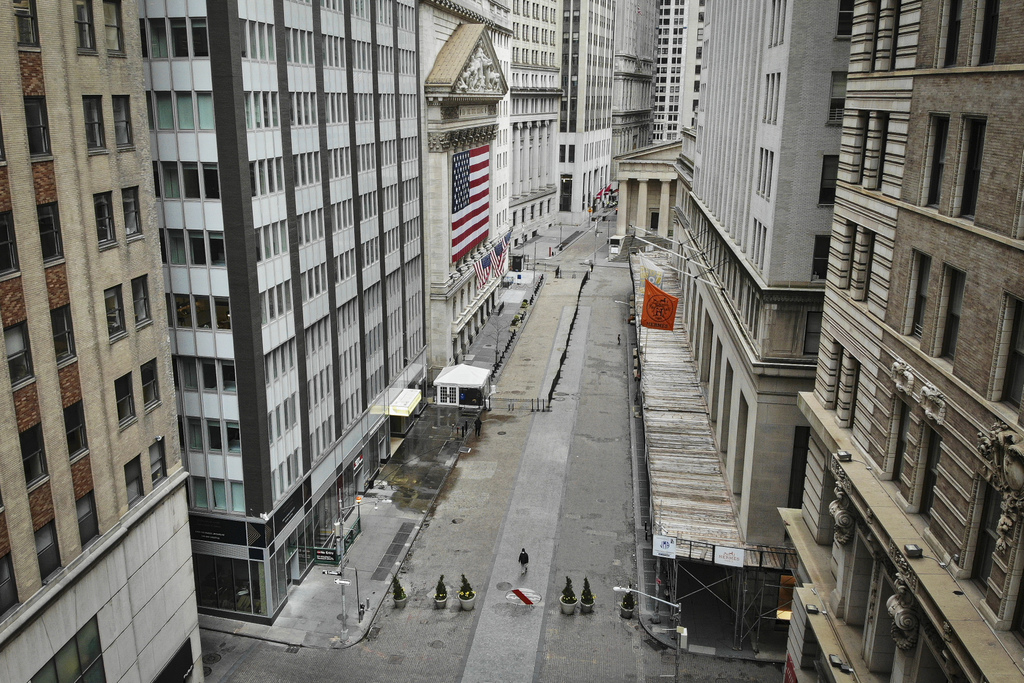[ad_1]
By STAN CHOE AP Business Writer
NEW YORK (AP) — The Federal Reserve did what it could to help financial markets and the economy Monday. But investors are still waiting for Congress and White House to do the same.
The uncertainty about Washington’s response to the coronavirus crisis caused another day of jostled trading. An initial jump for U.S. stock futures and European stocks following the Fed’s announcement of a tidal wave of support for lending markets quickly dissipated, and the S&P 500 was down about 1.4% in morning trading.
That adds to recent losses for the U.S. stock market, which is down by roughly a third since its record last month, as more businesses shut down around the world in hopes of slowing the spread of the coronavirus. Economists increasingly say a recession seems inevitable, and investors are looking for help — from central banks as well as governments — to support the economy as markets wait for health experts to corral the outbreak.

The Fed came through Monday, saying it would buy as many Treasurys and mortgage-backed securities as it takes to stabilize bond markets. It goes way beyond the $700 billion in purchases it announced last week, which economists called a “bazooka” of support. It also said it will buy corporate bonds and other investments to help improve trading in markets, which have been thrown into mayhem amid a rush for cash. Investors are rushing to sell what they can to raise cash, which has caused prices for even high-quality bonds to fall and trading to get snarled. The Fed’s efforts are aimed at helping those markets.
“This is excellent, comprehensive, covering many areas of the financial markets, their function, the flow of credit — this is exactly what was needed,’’ said Donald Kohn, former Fed vice chair and now senior fellow at the Brookings Institution. “The Fed has hit it out of the park as far as I’m concerned.”
“The key issue now is getting the fiscal response straight,’’ said Kohn, saying that Congress needs to finance a stabilization fund to back up the Fed’s efforts.
Congress debated through the weekend on a rescue plan for the economy that was nearing $2 trillion. But top White House officials and congressional leaders are struggling to finalize it.
The S&P 500 was down 1.4%, as of 10:30 a.m. Eastern time. It had been down as much as 3.3% earlier in the morning.
The Dow Jones Industrial Average fell 290 points, or 1.6% to 18,873 and the Nasdaq was flat.
Lockdowns and closures intended to halt the spread of the new coronavirus expanded over the weekend to include many cities around the world and the number of people infected surged past 336,000.
A sharp surge in cases and in deaths across the region, especially in Southeast Asia, have also raised the level of alarm.
Ultimately, investors say they need to see the number of new infections stop accelerating for the market to end its prolonged, bouncing tumble.
Investors have continued to seek safety in U.S. government bonds, driving their yields broadly lower. The 10-year Treasury yield, which influences interest rates on mortgages and other consumer loans, slid to 0.72% Monday from 0.94% late Friday.
Many investors are waiting for markets to fall further before plunging back in, said Naeem Aslam of Avatrade.
Should the market drop by another 10% to 20%, the overall decline from recent peaks would be over 50%, and “that would be a massive buy signal,” Aslam said.
More than 14,400 people have died of the coronavirus worldwide, while nearly 100,000 people have recovered.
For most people, the coronavirus causes only mild or moderate symptoms, such as fever and cough, and those with mild illness recover in about two weeks. Severe illness including pneumonia can occur, especially in the elderly and people with existing health problems, and recovery could take six weeks in such cases.
___
AP Economics Writer Paul Wiseman contributed.
[ad_2]
Source link
